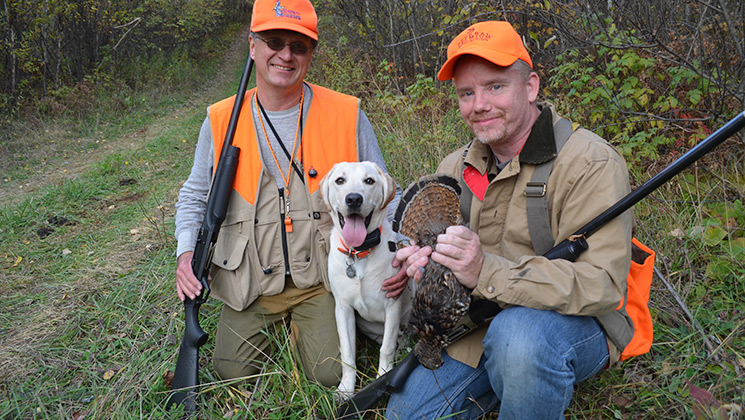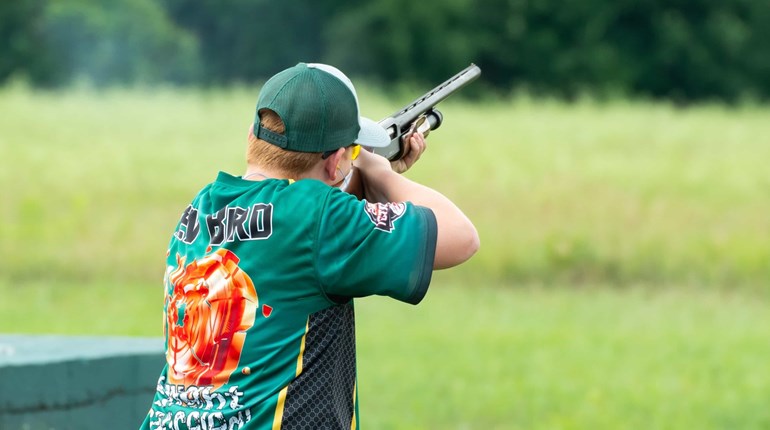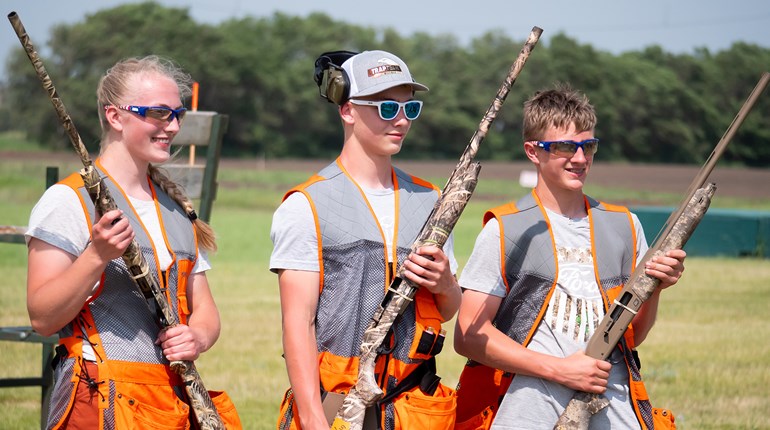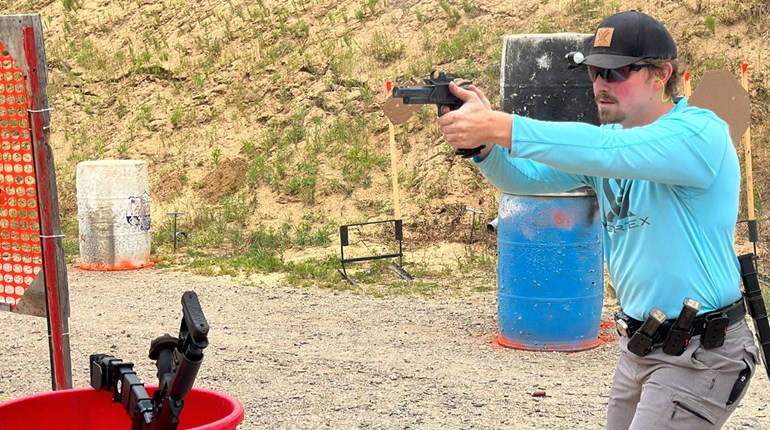
If I have learned one thing about sportsmen, it is that if a hunter gets this light in his eyes and eagerness in his voice as he tells you about his favorite time and place where the rut is hottest, the ducks thickest or the pheasants surest to rise cackling at your feet from frosted fields, you should listen. If he, out of good will or sheer stupidity, invites you into this dreamscape, go.
So when Tim Brandt, who is such a generous sort of fellow, described scenes that could’ve been Frederic Remington paintings of ruffed grouse hunting around his northern Minnesota camp, I kept hoping for an invite. When he was finally so overwhelmed with his upland-fantasy-come-true portrayal that he, perhaps foolishly, paused to invite me along, I didn’t hesitate.
“I’m all in, Tim. Just say when,” I said.
“Right,” he said, as his mind tumbled over the logistics.
Before I begin, I should say that all the trouble began with a shared understanding.
The Nature of the Fowl
For those who don’t know, let me state an undisputed fact: Ruffed grouse are not gentlemen. They are scoundrels. They don’t have the bobwhite’s gallant observance of etiquette. Nor do they have the pheasant’s dashing dress and predictably daring flushes. No, the behavior of ruffed grouse is so abrupt, rude and devious it actually deteriorates gentlemanly forbearance in any who dare hunt them. They bring us down to their sly, then explosive and, finally, snap-shot-only level. And when they do fall, they go down leaving us so drunk with awe we question whether we really just made that shot. It was too fast to be real, I always think as I glance down at my shotgun and then to where the majestic ruffed grouse lays still. Make no mistake, this is their revenge, as the euphoria of success over this 20-or-so-ounce, mostly brown bird with feathers jutting cockily off the back of its head (yeah, like Woody Woodpecker’s) is so profound it lasts, and lasts, and convinces us to keep busting cover and burning out boot soles for another sound of a flush somewhere back in the dense undergrowth, and then, just maybe, the chance for another shot.
Tim and I shared this understanding of grouse, as does any serious ruffed grouse hunter who doesn’t live in the Rockies where, for some reason having much to do with naiveté, ruffed grouse often bumble around like barnyard chickens.
We both also knew that real ruffed grouse hunters tend to be loners. Sure, someone will be foolish enough to join one of us in a mad jaunt around the forest once in a while, but he rarely comes back for a second marathon walk. And when he does, it’s only because over an interceding winter, spring and summer, the pain and humiliation he’d experienced busting grouse cover and swinging shotguns at shooting stars was nearly forgotten and, piece by piece, replaced by romantic recollections of the distant drumming of ruffed grouse somewhere deep in the autumn forests, somewhere just beyond the lightly jingling bell on a dog’s collar.
So okay, Tim and I have in common this crazy love of grouse hunting, with or without dogs, even though we’re from opposite ends of the ruffed grouse’s kingdom. I grew up hunting grouse in New York and New England. Tim is a Minnesotan and spent many years working for Federal Premium in Anoka. Now he lives in Florida where he is the marketing director for Taurus USA, a company known for innovative and affordable handguns, but he spends as much of October as he can in his Minnesota grouse camp.
Each time I’d see Tim at trade shows he’d paint with words this landscape of logging roads winding forever over and between low hills covered in white birch and aspen. In his October stories, the forests would be afire with autumn color and the ruffed grouse drumming in the distance and then flushing fast, twisting away between trees, and he’d be shooting and taking just enough on each soft autumn day to add a happy weight to his game pouch.
And then Tim Brandt invited me into his dreamland.
The Dream Meets Reality
Tim’s father, Steve, met me at the airport in Minneapolis. Steve doesn’t have the fever, the grouse fever, I mean. He is content to take leisurely strolls down logging roads for the chance of a flush. But if the birds aren’t there he isn’t going to push down another, then another, logging road or even go off trail in search of grouse. No, he’ll sanely go back to the tent and take his boots off and have a glass of wine before a succulent dinner. His ideal hunt is climbing into his deer stand, a place he has sat in year after year watching the sun rise over November. He adores his stand so much he wanted to show it to me, as if it was a lake home he was so very proud of.
Yeah, I liked him from the start.
If you’re tempted to say his sane disposition toward grouse hunting is an example of age and experience, I’d beg to differ, as I’ve seen plenty of otherwise perfectly normal silver-haired gentlemen with the fever.
We drove north from the Twin Cities in October, and the forests went from being lightly colored with autumn pastels to full flame to a week after peak color. For the grouse hunter, we’d entered the ideal moment in the cycle of the seasons when the forests sing of grouse. The whitetail rut is weeks away and the forest floor is as bright as the trees still speckled with color. The tree limbs now appear dark and the sky can be blue or muddy, doesn’t matter, what matters is the forest. So yes, the forest had the look that makes a bird hunter pause as a smile touches his face and his nose twitches, as if he’s savoring the decadence of fallen leaves, apples and acorns.
We arrived at a white wall tent pitched down a winding dirt road sprinkled with yellow poplar leaves. A wood porch holding a picnic table had been added to the tent’s platform. This is their deer and grouse camp. The tent is complete with a stovepipe rising from a cast-iron wood stove. That night Tim, in his exuberance, would overload the stove so much it brightened to cherry red, which made Tim’s father shout, “Timmy … Timmy … open the flap … I’m being cooked!”
But that was to come. When we arrived, Tim was there smiling. But there was something behind his Minnesota smile I understood. He’d been in camp for two days hunting with friends, I found out in bits and pieces. They’d flushed birds, but he’d missed and missed. He’d yet to knock down a bird. Perhaps Florida had put him out of grouse-hunting form. Whatever the reason, the fever had not been abated with a dose of success.
We left camp for a nearby trail and our hunt started innocently enough when a bird flushed. It took off and arced away in a predictable rise over open ground like a pheasant might. This one would have been embarrassing to miss. That isn’t normal. A good grouse hunter can kill three or four birds per box of shells; someone who can get five or more is either exceptional or a liar. But none of us even shouldered our shotguns. We just watched the grouse flutter away as nonchalantly as a butterfly on a summer day, and when it was gone we all laughed. There aren’t many flushes like that.
There sure weren’t. The afternoon passed with some very un-embarrassing misses—getting shots off was a feat of human reflexes.
We gathered that night at The Good ’Ol Days Bar-n-Grill, a perfect tavern for a town used to transients in the warmer months and to who knows what in the colder ones—Embarrass, Minn., the town that often grabs the unwanted record of being the coldest in the Lower 48, is just down the road. The owner and everyone at Good ’Ol Days knew Tim by name, and they were polite and as jovial and didn’t ask how we’d done in the field.
The next morning, walks down winding, picturesque logging roads resulted in more misses. Tim checked his fitness watch and noted that we’d already walked 10 miles. Now, I’d paint the picture of this march for you, but as time went it grew as tedious as Cormac McCarthy’s The Road. Sure, the country was off a postcard—right out of an upland bird hunter’s dreams—and the grouse cycle was near the bottom, but walk our legs off as we did, we couldn’t get a bird.
This went on for an uncomfortably long time before, well, a grouse committed an act of uncommon compassion. It surrendered. We must have looked that needy. It just walked out in front of me like it was of the Rocky Mountain clan. I’d like to tell you it was a few feet into its flush when I shot it, but the truth is it had just started to pound its wings when the shot sent it tumbling into the leaves beside the overgrown logging road.
Remember what I said about ruffed grouse bringing out the worst in us? Well, it brought out such a feeling in me that I didn’t even care that it wasn’t twisting away like a bottle-rocket when I shot. No, I just smiled and said, “Thank you.”
The next day I made that perfect shot we all dream of on a madly flushing bird. It took off just in front of a young, but talented, yellow Lab being led by a local grouse guide named LeRoy Forstrom, who was free for the afternoon so just volunteered to show us some birds. That was a classic afternoon hunt, but as any ruffed grouse hunter knows, such things are wonderful exceptions.
As we went, there were other misses and glorious hits, but they all soon became a menagerie of images behind that first kill at the end of a 20-mile march with gun at ready.
By the time Jason Nash and J.J. Reich, both current employees at Federal Premium, showed to hunt with us for a day Tim had killed his birds and his fever was at a manageable level. Tim’s father had his feet up in camp. And I’d killed enough grouse, and a woodcock, to add just enough weight to the back of my game pouch that I was content to watch them miss and to laugh about mine.
As almost any honest grouse hunter will tell you, I’ll admit I didn’t shoot well, but I did shoot well enough for the memory to reseed and live on in my grouse-hunting daydreams for another winter, spring and summer sliding into the magic of another fleeting autumn when I’ll have to learn this humbling lessons all over again from Mr. Grouse.





































